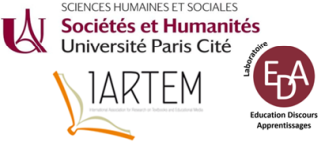This paper presents the results of research focused on the use of learning materials in the environment of non-formal education, specifically in galleries and art museums. The constituent part of the research collection consists of institutions located in the Ústí nad Labem Region in the Czech Republic. It is the region where the home university of the authors of this contribution is located and the relationship with such institutions is essential for the students, who are in the process of preparation for becoming teachers of art education. The teaching profession is traditionally bound by formal education; however, the position of non-formal education is becoming more and more distinct in the curriculum for elementary schools, in particular with the curricular reform which started in 2022.
Mortensen, Smart (2007) assert museums (and within the context of this research galleries as well) present a different kind of learning than school. It is a kind of learning that cannot be measured immediately after two hours long visit to a museum or a gallery. Museums present the opportunity to learn at students' own pace and the possibility to choose subject matter according to one's interest without the pressure of following assessment (Kisiel, 2007). Falk and Dierking (2000) claim that “one's own choice and control” are important tools for optimizing students' learning. Kisiel (2003, 2007) further mentions that well-conceptionally structured worksheets (one of the very frequently used learning materials in museums and galleries) can span the gap between structured classroom learning and learning in an informal environment. His research suggests that teachers choose to work with the worksheets in order to make the visit to the museum better structured as well as to reinforce students' concentration and learning (Kisiel, 2003).
The following research questions were determined:
-
Which learning materials are created in galleries and museums in the Czech Republic?
-
How are learning materials involved in educational programs?
One of the data segments works on the half-structured interviews with workers of selected institutions, whose work content is a concept design and management of the auxiliary programs or creation of learning materials. The interviews were carried out within the two-year-long project which was focused on the analysis of a conception of accompanying and educational programs in galleries and museums of art in the Ústí and Labem Region. The interviews are analyzed using the method of open coding (Charmaz, 2007), and the resulting outcomes are categories that define concrete approaches and options for integrating learning materials into educational programs. The results which stem from the analysis suggest that learning materials are used in three major ways: 1) Learning materials were designed for the lecturer's use and intended for participation in the programs; 2) Learning materials were designed as self-service, but lecturer engages them during the program; 3) Learning materials were designed as self-service are not used during the program. The contribution aims to present constituent subcategories as well as to present specific examples of using learning materials by individual institutions.
Such findings are further compared with data from other sources: 1) written reflections of the students of the Department of Art and Education, Faculty of Education, J. E. Purkyně University in Ústí nad Labem, who visited auxiliary programs in galleries or art museums in the last five years, in which case learning materials were used 2) questionnaires which were sent to educators in galleries and museums across the Czech Republic.
The outcome of the research is, in the first place, to name and characterize types of learning materials that are used in galleries and museums in the Czech Republic and primarily the categories of the ways of integration of learning materials into educational programs, which are further compared with the outcomes of domestic as well as foreign similarly focused studies.
References:
Falk, J. H. and Dierking, L. D. (2000). Learning from museums: Visitor experiences and the making of meaning. Walnut Creek, CA: Altamira Press
Charmaz, K. (2006). Constructing grounded theory. Thousand Oaks, Calif.: Sage Publications.
Kisiel, J. F. (2003). ‘Teachers, Museums and Worksheets: A Closer Look at a Learning Experience', Journal of Science Teacher Education. 14(1), 3–21.
Kisiel, J. F. (2007). ‘Examining Teacher Choices for Science Museum Worksheets', Journal of Science Teacher Education, 18(1), 29–43.
Mortensen, M. F., and Smart, K. (2007). ‘Free-Choice Worksheets Increase Students' Exposure to Curriculum during Museum Visits', Journal of Research in Science Teaching, 44(9) 1389–1414.

 PDF version
PDF version
